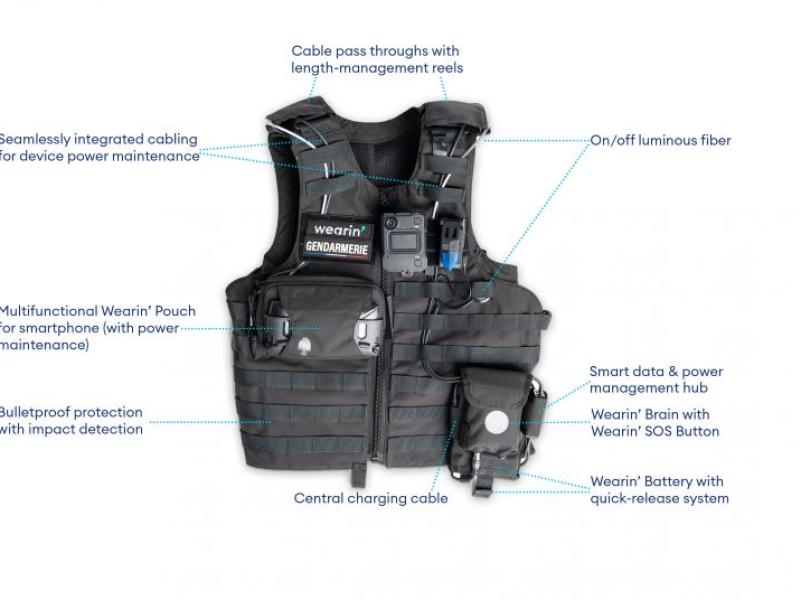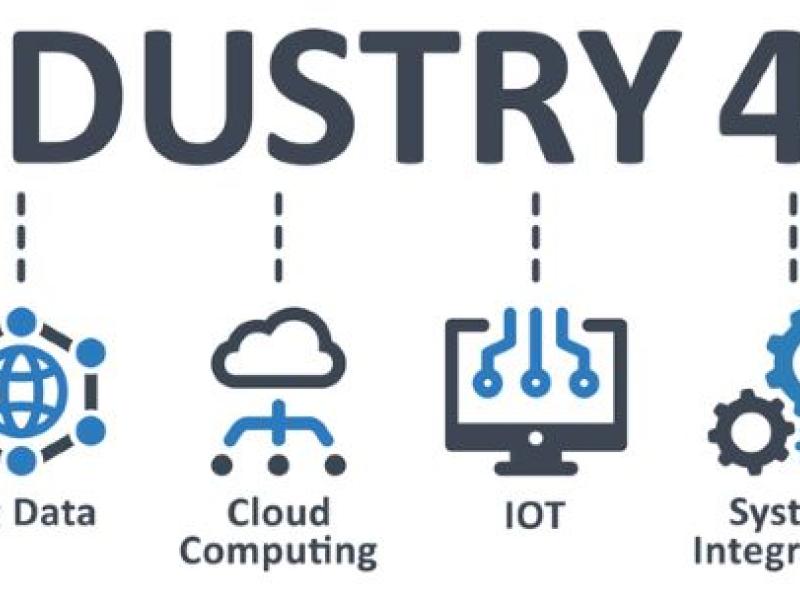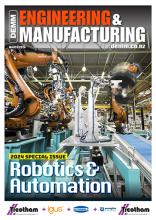Janus, the Roman god of new beginnings, is represented by a double-faced head, one facing the past and the other facing the future. Taking inspiration from this, manufacturers looking to accelerate their digital transformation in 2022 should also consider the impact of 2021. So, what technology should manufacturers be looking to adopt? Here, Johan Jonzon, co-founder and CMO of edge analytics pioneer Crosser, shares his insight on the digital technology to watch over the next year.
One thing that’s certain this year is that the pandemic-induced waves of disruption to operations are far from over. According to a survey conducted by Info-Tech Research Group, 47 per cent of respondents expect a long-term change to the way we work. For many manufacturers, this change takes the form of an accelerated digital transformation.
Raconteur predicts that by 2025, 463 exabytes of data will be produced globally each day. That’s a huge increase from 2020’s daily 2.5 exabytes. It’s clear that data is going to explode over the next few years, so organizations need to be ready to unlock its value and adopt a data-driven mindset. For a successful digital transformation, manufacturers must consider how to use this data for improved decision making, better productivity and growth. So, what’s coming next?
Living up to the hype
Hyperautomation was heralded as one of Gartner’s Tech Trends in 2021, but will it continue to in 2022? In theory, the concept of hyperautomation sounds relatively simple — to automate as many processes as possible across an organization. However, in practice, reaching a hyperautomated state is a slow-burning challenge.
Contrary to traditional automation, which focuses on individual processes, hyperautomation looks holistically at an organisation as a whole. It involves eliminating data silos and integrating business systems. With robotic process automation (RPA) central to the process, hyperautomation also involves artificial intelligence (AI), process mining and streaming analytics. By integrating each of these technologies in unison, manufacturers are able to achieve end-to-end automation of their business for increased efficiency.
However, unlike some other digital transformation trends, hyperautomation is not something that can be implemented quickly. Connecting data from every system within a business, including the factory floor, IT systems, sales applications and supply chain management tools is challenging. Each of these systems may operate on different protocols, produce data in different formats, and generate values at different time intervals, which all needs to be unified.
With the complexity of hyperautomation clear, it's likely that throughout 2022 we will see manufacturers continue to implement their hyperautomation strategy and pioneers will start to unlock its value. In fact, Gartner predicts that 85 per cent of hyperautomation adopters will continue their efforts and investment in 2022.
Eliminating coding confusion
Low-code software has been around since the 1980s, but a combination of factors will lead to further growth in 2022. It eliminates the need for vast coding knowledge within a business. Instead, it takes a visual approach and uses functions like ‘drag and drop’ to allow non-developers to visually create the process that they are trying to create without the for code.
There is a dual challenge facing all industries today that will mean we see the rise of low-code software in 2022. Skills shortages have been a problem for most sectors globally for a few years now — according to McKinsey, 87 per cent of companies either already have a shortage of digital skills or are anticipating one in the next few years.
On top of this, the pandemic placed unprecedented levels of pressure on already under capacity IT teams, who were tasked with facilitating a rapid shift to remote working and increasing automation on the factory floor to keep the workforce safe. And according to Mulesoft's 2021 Connectivity Benchmark Report, the pressure on IT is showing no signs of stopping. On average, IT teams were expected to deliver 30 per cent more projects in 2021 than 2020. At the same time, less than four in ten teams completed all projects asked of them.
With this in mind, the demand for low-code enterprise software is likely to increase to alleviate this pressure. Low-code software, like Crosser’s Flow Studio, allows existing OT personnel to automate industrial processes themselves without any input required from software developers. With the pressure on IT sure to continue into 2022, it’s likely that we’ll see a growth in the low-code market to prevent the restriction of industry’s digital transformation.
Accessibility through APIs
Ensuring a seamless digital user experience (UX) is essential for manufacturers looking to upgrade to Industry 4.0. All more often, employees are expecting the same quality of UX at work as they are at home, presenting manufacturers with the challenge of competing with the UX of tech giants like Facebook and Amazon.
Simplicity and usability have presented a need for technology that can be built up quickly by members of an organization outside of the department. 2022 will see the rise of the business technologist — employees who sit outside of IT but still create technology for commercial use.
With the need for seamless UX that suits business technologists, manufacturers should expect to see a rise in the composable business model. Composable business models based on the idea that all business processes can be created using a set of interchangeable, modular building blocks.
Composable business is enabled through open and easy-to-use application programming interfaces (APIs) — software intermediaries that allow applications to communicate. By combining the functionality APIs with interchangeable, modular building blocks common business processes can be implemented also by non-IT staff.
Using the philosophy of composable business and reusable APIs, 44 per cent of organizations are developing plans to enable non-IT users to integrate data sources to gain actionable insights into their facility’s operations. With the acceleration of the digital transformations showing no signs of slowing down, adopting this technology in 2022 will allow manufacturers to empower their IT teams and business technologists alike to streamline their operations using prebuilt APIs, for more efficient operations.
For manufacturers looking to adopt any of these technologies, Crosser’s suite of low-code solutions can support your digital journey. The Crosser Platform allows the real-time analysis and automation of any data source, while Crosser IPA — industrial process automation — is a hyperautomation essential, allowing non-developers to design intelligent workflows and integrate siloed systems across all business functions.
The unpredictability of the last couple of years has prepared businesses across all sectors to expect the unexpected. Manufacturers have had no choice but to integrate technology to make their operations more flexible, scalable and digital. But like any innovation, new digital technologies are never far away. So, preparing for what’s next will help manufacturers to gain a competitive edge and keep their digital operations at the edge of innovation.
To learn more about Crosser and its digital transformation solutions, visit www.crosser.io.






